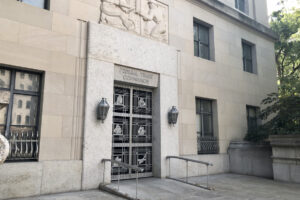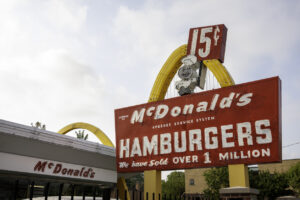The Antitrust Division of the U.S. Department of Justice (DOJ) and several state Attorneys General are challenging the American Airlines Group Inc. (“American”) collaboration with a competitor, JetBlue Airways Corp. (“JetBlue”). Both sides of the dispute accuse the other of harming competition amongst airlines. On September 21, 2021, the DOJ and its state attorney general partners filed suit in Massachusetts federal court to block a series of agreements between the airlines called the “Northeast Alliance.” The plaintiffs argue this Alliance will reduce competition between American and Jet Blue to the detriment of consumers. On the other hand, American and JetBlue say that the Alliance allows them to better compete with other major airlines.
Background
The attorneys general of Arizona, California, Florida, Massachusetts, Pennsylvania, Virginia, and the District of Columbia have signed on to the DOJ’s suit. American is the world’s largest airline. In 2019, it flew approximately 215 million passengers and took in roughly $45 billion in revenues. JetBlue is a low-cost airline founded in 1998. In 2019, JetBlue flew over 42 million passengers and took in approximately $8 billion in revenues.
On July 15, 2020, American and JetBlue entered into a collaboration, memorialized in a series of agreements, including an umbrella agreement titled the “Northeast Alliance Agreement.” That agreement commits the companies to pool revenues and coordinate network planning at Boston Logan, JFK, LaGuardia, and Newark Liberty, including deciding together which routes to fly, when to fly them, who will fly them, and what size planes to use. The companies also committed to pool and apportion revenues earned on flights.
The Lawsuit
The lawsuit argues that consolidation, which the government contends negatively impacts consumers, has occurred rapidly in the U.S. airline industry. In 2000, the four largest airline companies controlled 55% of the market. Today, they allegedly control 81%. One of the ways the government claims consolidation harms consumers is that it allows airlines to reduce capacity—the industry’s term for the number of available seats—which inextricably raises prices.
The agencies’ complaint describes Jet Blue as a disruptive force in the marketplace, including acting as downward pressure on the prices of American and other airlines. The agencies also assert that the alliance operates as if the two airlines merged. The lawsuit argues that even though each airline is permitted to set its own prices, the Northeast Alliance will allow American and Jet Blue to coordinate important strategic decisions that will cost American consumers hundreds of millions of dollars in higher airfares and reduced travel options. “In an industry where just four airlines control more than 80% of domestic air travel, American Airlines’ ‘alliance’ with JetBlue is, in fact, an unprecedented maneuver to further consolidate the industry. It would result in higher fares, fewer choices, and lower quality service if allowed to continue,” Attorney General Merrick Garland said.
The complaint asserts a single claim under Section 1 of the Sherman Act, the federal antitrust law prohibiting unreasonable restraints of trade. To succeed under Section 1, the plaintiffs will have to show that the “Northeast Alliance Agreement” unreasonably restrains trade. Courts analyze agreements under either the “Per Se Rule” or the “Rule of Reason.” Under the Per Se Rule, agreements that always or almost always tend to restrict competition and decrease output are considered automatically illegal and condemned without further examination. Ohio v. Am. Express Co., 138 S. Ct. 2274, 2283. The plaintiffs do not appear to be arguing that here. When using a Rule of Reason analysis, the factfinder weighs all the circumstances in the case to determine if the challenged restraint substantially suppresses or destroys competition. Am. Express Co., 138 S. Ct. at 2284. The goal is to distinguish between restraints with anticompetitive effects harmful to the consumer and restraints stimulating competition in the consumer’s best interest. Courts have developed a burden-shifting test where the plaintiff may show harm using either (1) direct evidence, like increased prices or reduced output, or (2) indirect evidence, like demonstrating the challenged restraint substantially harmed competition in a defined market in which the defendant has market power. If the plaintiff carries that burden, the defendant then must come forward with evidence of the restraint’s procompetitive effects, and the plaintiff must then show that any legitimate objectives can be achieved in a substantially less restrictive manner.
American and JetBlue’s Response
American and JetBlue seem undeterred. American Chairman and CEO Doug Parker argued the Northeast Alliance would increase, rather than harm, competition because the Alliance allows American and JetBlue to better compete with other airlines that currently dominate the New York airports. “Ironically, the Department of Justice’s lawsuit seeks to take away consumer choice and inhibit competition, not encourage it,” Parker said. “This is not a merger: American and JetBlue are—and will remain—independent airlines. We look forward to vigorously rebutting the DOJ’s claims and proving the many benefits the Northeast Alliance brings to consumers.” JetBlue CEO Robin Hayes similarly said JetBlue’s “commitment to competition and low fares remains as strong as ever. This is not at all like a merger with American—we have two different business models and are not working together on pricing.”
Takeaways
This matter raises a few interesting questions. If American and JetBlue stick to their guns and litigate this matter, how will the court resolve the parties’ conflicting claims of effect on competition? What role, if any, will post-Northeast Alliance price changes play? Of course, the agencies will view any price decreases with great skepticism, while the airlines will argue that they are one of the benefits of the alliance. Is this a one-off case, or does the DOJ intend to bring antitrust actions against other large competitors that form strategic partnerships with smaller competitors to better compete against larger competitors that enjoy the largest market share?

















